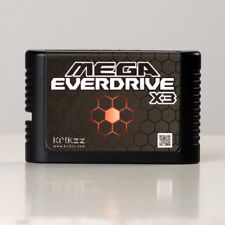|
March 2nd, 2014, 02:16 Posted By: wraggster
 Format: Dreamcast Publisher: Sega Developer: in-house (AM2) Read our Shenmue review here Format: Dreamcast Publisher: Sega Developer: in-house (AM2) Read our Shenmue review here
It’s telling that there are only two series which share that much in common with Shenmue: Yakuza, with its heady Japanese environments, kitsch mini-games and crowd combat, plus The Elder Scrolls’ immense interactive population, circadian routines and completely voiced dialogue. This pair of game series, and their respective yardsticks of production, have paddled in Shenmue’s gene pool, even if that was never their intention. There are no Shenmue clones, of course.Shenmue was ahead of its time just as much as it was ahead of itself. It arrived on three GD-ROMs (proprietary 1.2GB Dreamcast discs), just one year after the console’s debut. At the time, it was the most expensive videogame developed. Originally planned for release on Saturn, it swelled into a 16-chapter tale that was eventually compressed into three games, but that weight loss still wasn’t enough to save it from its own ambition, with the third and concluding chapter still nothing but a cross that Sega’s fans continually beg it to bear. Perhaps its only software legacy is to have sealed the ascent of the QTE – quick time event – into gaming’s plump lexicon of abbreviations, but its heritage lives on, often quite fiercely, in the hearts of those who plunged themselves into Shenmue’s grand world.Despite Shenmue’s prerelease selling points embodying the tiresome bunfight of specs, jargon and pillow-talk that would clog up 21st-century E3 events and blustery, post-GTA press releases – Millions of the most realest graphics ever! Unprecedented explorational freedom bar none! – it still successfully tapped into a tremendous wellspring of faith. And Dreamcast owners were certainly looking for something to believe in, with Sega having delivered a console that personified its effervescent arcade joy; Shenmue was the game that would prove to the rest of the world that Sega could also hold its own among the grandiose, multi-disc epics of the post-FFVII gaming scene. “It’s involving, and ultimately rewarding, but only represents a step towards what may be possible in the future, rather than the milestone Edge hoped for,” we concluded in our Shenmue review. “It’s involving, and ultimately rewarding, but only represents a step towards what may be possible in the future, rather than the milestone Edge hoped for,” we concluded in our Shenmue review.
What AM2 delivered was an ineffably slow-paced and coagulated experience, centred on Japanese teenager and monotone human chipboard Ryo Hazuki, and his search for his father’s killer. Some were entranced by the game’s abounding atmosphere and visual detail. Others left frozen by clumpy interaction with an unthreatening, almost rustic world whose lofty promises were its only true revolution. And some must have felt somewhat marooned, afloat in an atypical world where they’d wander the districts of Yokosuka while asking unusual questions to pensioners and hairdressers with ornate faces in a bid to follow the protracted trail of breadcrumbs left behind by Lan Di, the murderer of Ryo’s father. It felt as if, however glamorously realised it may have been, Shenmue was a game of middle management, often composed of the unglamorous daily grinds – being home for bedtime, wisely spending money earned from a day job, or training combat moves through lonely practice – that other games bypass.It’s this domestic-level existence that’s the key to Shenmue’s power, however. Nothing allows you to drink in visual finery quite like a game character that walks at, well, walking speed. When drama kicks off, it’s Ryo’s otherwise drab existence – his hand held by the player at every stage – that gives it genuine, memorable weight. The 100-man battle; the ultimate showdown with Gollum-esque brawler Chai; Ryo’s motorbike ride with long-time friend and emerging sweetheart, Nozomi; even Christmas, as part of the game’s real-world 1986/1987 calendar, feels more than just an excuse to skin Yokosuka with some festive touches. And Lan Di himself makes for a cruel nemesis indeed, rarely appearing throughout Shenmue. Ditto Shenmue II, in which he steals the hero’s ending via a helicopter ride into a sunset sky. Two games in, and with justice not yet meted out, he’s the videogame equivalent of a war criminal.It all feels somewhat perverse, next to the exaggerated power-fantasy otherworlds, confidently structured goals and firm conclusions of other adventures. If not perversion, then it’s definitely representative of a player’s will to believe, a will that still persists in the never-static Shenmue III rumour mill, in the calls, petitions and laments for a closing chapter to the series, and in the fansites dedicated to reverse-engineering as much of the Shenmue universe as possible. It showed not just what gamemakers are capable of, but also what gameplayers are capable of, in how keenly some of them can connect and empathise with the vision presented to them. It’s a game that felt as full of optimism for the future potential of gaming as its readily receptive audience, and remains an immense and charmingly idiosyncratic achievement that loiters in the minds and even hearts of its fans as surely as it’s etched on to a trio of Dreamcast discs.
http://www.edge-online.com/features/...ctive-shenmue/
For more information and downloads, click here!
 There are 0 comments - Join In and Discuss Here There are 0 comments - Join In and Discuss Here
|
|
 Sega Everdrive Flashcart
Sega Everdrive Flashcart






